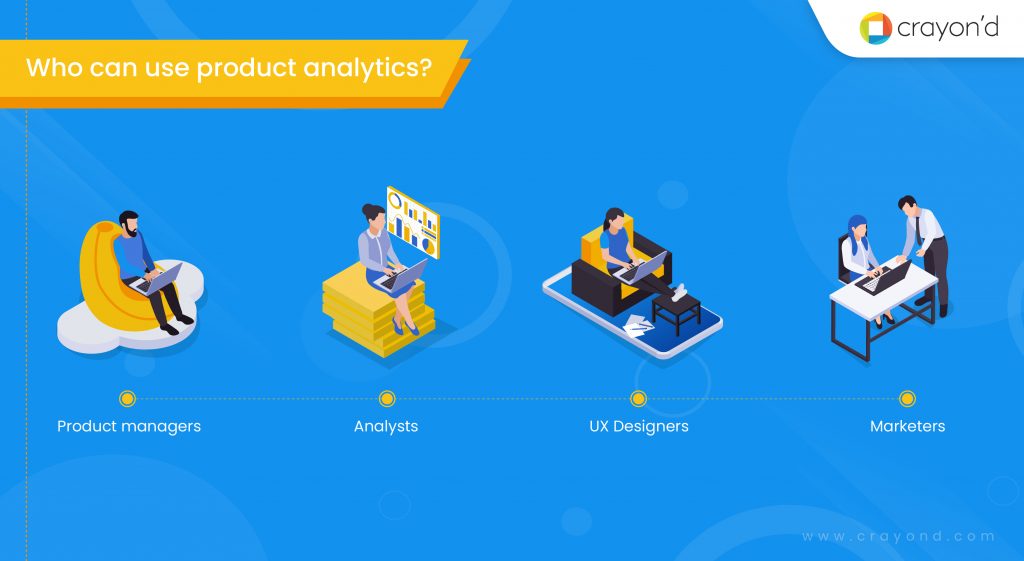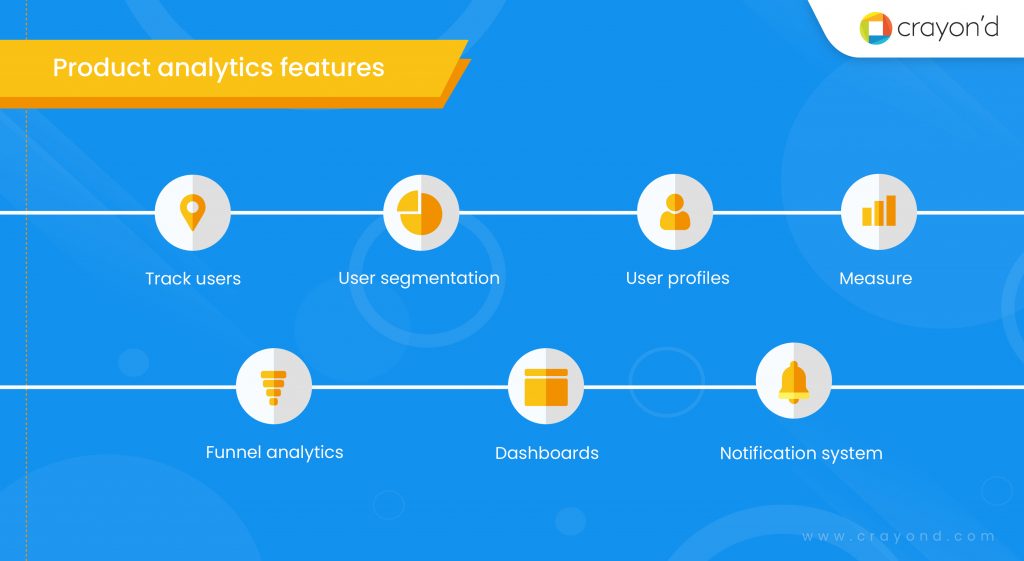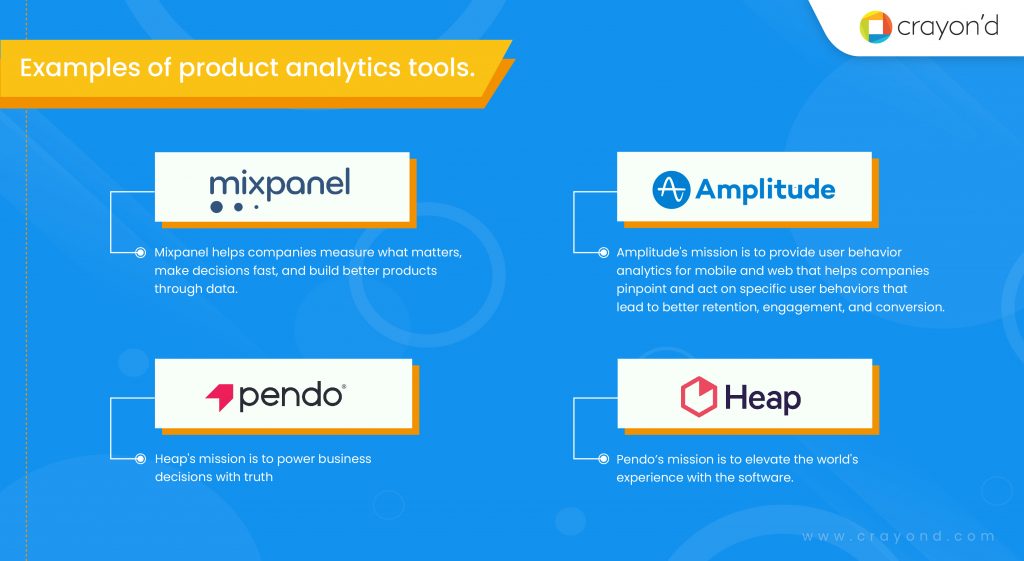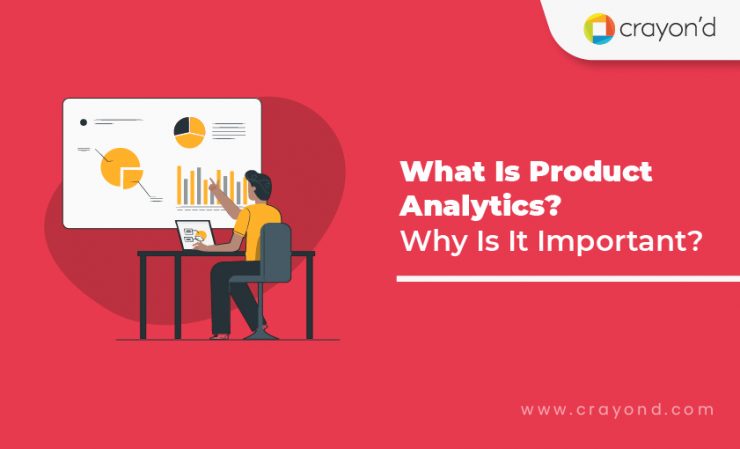The Product-user relationship is the golden key to opening the doors of product success. If the user is not engaging regularly, it’s definitely a warning sign! And the relationship is in danger.
Here, it’s upon your product to save this relationship. It’s unlikely to expect the human partner (customer) to adjust. Instead, your product can and it must. It can put forward the user’s needs.
Your product can always be changed for a human (unlike other humans).
Any relationship needs the effort to sustain. How do you do that? By caring. When it comes to product companies, attentiveness and acknowledgment are care– recognition of users’ behavior and emotions.
Attention gives you knowledge. It fills you with insights. Only through attention, you will know their feelings and act upon them. Product analytics can help you provide this attention to your users!
Let’s dive in to know more.
What is product analytics?
Product analytics is the process of analyzing users’ interaction with your digital product. It is done by monitoring their engagement. You collect this data and process it to figure out the user’s behavior inside your product.
This data is a goldmine of information. It shows how your user likes your products. They reveal answers to questions like,
‘What does your user like in your product?’
You will also get to spot the areas of friction. Finding out their usage patterns can help build a better user experience.
Well, you may think
‘Isn’t the feedback system helpful for this purpose?’
Yes, feedback is helpful. Feedbacks are asked only post-interaction with the product. It means users don’t remember the nuances of every interaction. They’ll only have the memory of the significant interactions and highlights.
But, product analytics measure the effectiveness during the time of interaction. Tracking this live behavior gives authentic insights, deeper than feedback.
Who can use product analytics?
Product analytics can be used by various people in the product team.
Anyone who
- Cares about the product
- Wishes to improve the product experience
- Can contribute to the improvement
can make use of product analytics.
In most cases, some people in the product team hold the responsibility for this post-launch product monitoring and improvement. They are involved in refining the customer journey, in ways they can contribute.

Product managers
Product managers are in charge of making product decisions aimed at the betterment of the product. Data is crucial in enabling them to make big decisions. And product analytics can provide them with the data. It gives information about product performance, user behavior, likes, and dislikes.
It can empower the product owners to take necessary action for enhancing the product on the whole.
Analysts
Analysts look at the product from a business perspective — in terms of the churn and retention of customers. They aim at finding out the reasons behind churn and reducing it. Product analytics can reveal it. It’s not just that. They can also unveil data about what helps in retention and implement them accordingly.
Product analytics also contribute data for segmenting the users based on their usage patterns. Analysts can predict the ones who are likely to churn and can take necessary actions.
UX Designers
UX designers are accountable for creating a great user experience.
Well, what’s the base for creating such experiences? Understanding the user. While the UX is designed based on user inputs in the first place, there might be some gaps in the output. Filling the gaps is all that matters.
Product analytics can help UX designers find out the effectiveness of the experience they’ve created. As a result, they can identify areas to improve.
Marketers
Marketing is the contest of people’s attention-Seth Godin
Marketers need to know what aspect of the product,
- Hooks people’s attention
- Make them your customer
- Retains them for a prolonged period
And then use it as a part of their marketing campaigns. For that purpose, product analytics can reveal helpful insights. They’ll also get to know the various segments of people and create relevant strategies for each.
Product analytics features

The features and functionalities of product analytic tools vary from one brand to another. There are a few common features they have like,
- Track users
Allows you to track user actions and events inside the app or product automatically. Action refers to click, swipe, page views, and more. You can also see the number of users- new and returning, their time inside the product, return and exit frequency, etc.
These data will be helpful for user activity metrics like Daily/Monthly Active Users, the number of logins, etc.

- User segmentation
This function helps you in finding out who your users are. And also in classifying them based on factors like where they came from, when they visited, etc.

- User profiles
Enables you to categorize and establish user profiles based on the criteria of your choice. Profiles are better when you create them centered on your personas or ICPs.
In the case of the former, you’ll understand the behavior of your individual users. As a result, you can improve the experience for them. With the latter, you’ll figure out which organization your product caters to well. It’ll help you with your marketing campaigns.

- Measure
It helps you to measure user engagement in terms of a particular feature or the entire product. You can get to know the most and less used features, their session time, bounce rates, friction-areas, etc. Added to feature performance you can measure retention and churn rates as well.

- Funnel analytics
This feature helps you to find out and map various customer journey paths and conversion funnels.
A user signing up for the product goes through different journey paths. This feature helps you visualize all of the paths. As a result of which you can make improvements to make all of them easier for users.
Conversion funnels help you understand how many users have reached particular levels. You can easily figure out where the issue is, and where they drop off.

- Dashboards
Allows you to display and visualize data collected in effective ways like reports, charts, etc.

- Notification system
It helps you to send notifications to alert the product teams and communicate with the users as well.
Implementing product analytics
Purchasing or opting for a product analytics tool is one thing. Putting it into action is another. The former enables you. But the latter should be enabled by you. Let’s look at the steps involved in implementing your product analytics.
Set an objective/State the problem
The prime objective for approaching product analytics is to improve products or enhance business profits.
Without a clear purpose using product analytics is pointless. Before purchasing/ getting started with your analytics, you need to know the reason behind seeking help. It might be that you have approached the tools due to a problem or have a goal in mind. Setting and stating them with clarity is the first step in implementation.
Else, you’ll end up on the top data mountain. Sitting on the top, you’ll be wondering what to do with those heaps.
Make a tracking plan
For certain goals, you have a set of factors to be measured in your product. You need to decide and list down those factors based on your objectives. Then you can come up with a tracking plan for those depending on your tool.
Generally, analytics tools associate data to ‘events’. ‘Events’ are the actions taken by the users inside the product. In short, you need to decide what events should be tracked to achieve your goals.
Integrating tools with the product
Both the steps mentioned above are preparation. The actual implementation begins here.
You start by integrating the tool with your product. Set up the tool. Here’s where you put the last two steps into action. Tool setup must be based on the objectives and the plan.
Examples of product analytics tools
Here’s a list of top product analytics tools in the market

- Mix Panel
- Mixpanel helps companies measure what matters, make decisions fast, and build better products through data.
- Good interface and customizable dashboards
- Top features include segmentation and funneling
- Amplitude
- Used for both web and mobile applications
- Provides a variety of data tracking and visualization options
- Enterprise-level customer support and security
- Heap Analytics
- Heap’s mission is to power business decisions with truth
- Easy to implement and doesn’t rely on development teams
- Measures a wide variety of product metrics.
- Pendo
- Pendo’s mission is to elevate the world’s experience with the software.
- Provide both qualitative and quantitative insights
- Well suited for customer-focused product teams
Added to these, there are many other tools available.
How to find the right product analytics solution?
Product analytics can help your product business, but its effectiveness depends on the type of tool you choose. The right analytics solution makes all the difference. But, the market has a number of product analytics tools. They come at various costs and with different feature sets.
How do you know the tool is apt for your organization?
There are a few things to consider before making a decision. In short, you need to look for the factors to find the fit. If the tool ticks those factors, you can go ahead. The most important factors include,
- Tool features
- Budget
Carrying out the following process can ease the selection of the product analytics for your needs.
- Features that align with goals
You look for the analytics tool with a goal in mind. The tool must be able to help you achieve it. And for that, you must be able to measure particular things in your product.
Let’s say, you need to figure out why your customers leave so early. To know this, you might want to measure the engagement rate, customer journey funnel, certain features’ performance, etc.
Likewise, for every goal, you require specific data. It is possible if the tool has a feature to measure the data. The first criterion in selecting the tool is to see if its features align with your objectives.
- Budget
The next criterion is the budget. After choosing the ones with suitable features, go through their pricing plans. Select the ones which are more or less close to your budget.
- Integration
Another crucial factor that you need to consider is tool integration.
Check if the tool can be integrated easily with the other systems you already use. If it doesn’t, then you might not be able to get the most of the product analytics tool. Other tools may include, CRM tools, payment systems, email marketing, etc.
Do intensive research while choosing your product analytics tool. Take enough time to decide. Some tools provide a free trial or freemium option. You can give them a try. Explore the products and see if they match your needs.
Endnote
Your job doesn’t end with the purchase and implementation of the tool. The main work begins right after this.
What you do with the data insights decides the rest. If you aren’t ready to put it into analysis, you aren’t going anywhere near your goals.
Data you gain using product analytics is like the report card of your product. You sure have nail-biting moments with it. But you always get to know where you need to improve. And you got to work on it- see what it tells you, come up with strategies to deal with the problems, and implement the strategies.
Analytics tools cannot help your product if you cannot help yourself.
Remember- Data might seem so interesting, that you start processing everything. But that isn’t helping you anyway. Measure only what you need to manage. And deal with that data alone.
Users are changing. And, you must keep improving and improvising your product.
Data is the power you have got. Product analytics helps you wield it. All you gotta do is,
‘Choose and use wisely!’







Add comment